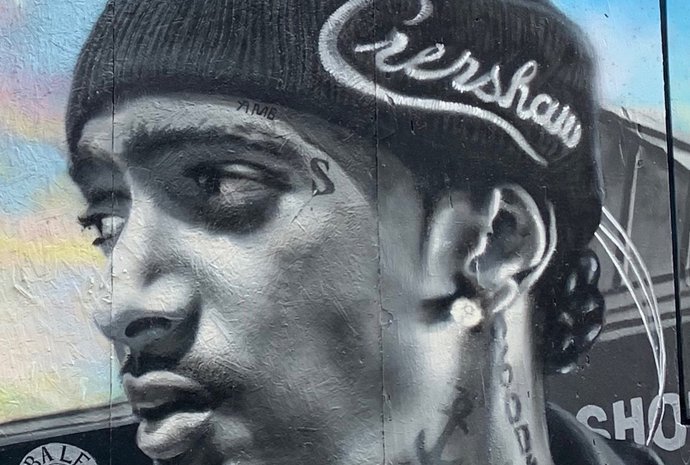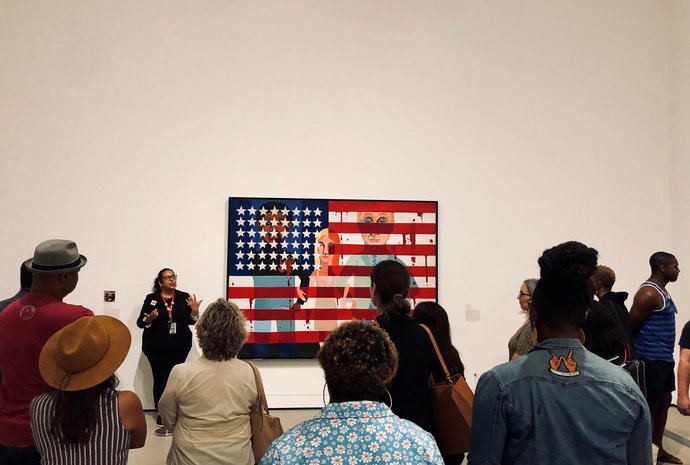LISC LA Launches the South LA Economic Inclusion Implementation Plan!
The Watts Rebellion in 1965 and the Los Angeles Uprising in 1992 began in South LA, but the 2020 Los Angeles Uprisings sparked by the Murder of George Floyd brought the ignored and unheard frustrations of Black and Latinx residents to the doorstep of our local public institutions and neighbors that do not traverse south of the 10 freeway. South LA community organizing has always sparked some of the most radical and thought provoking change across our region. LISC LA unveils the South LA Economic Inclusion Implementation Plan and program to provide an example of a locally developed strategy highlighting the strengths of the community while also combating the barriers for residents to reach economic mobility.
As the COVID-19 pandemic disproportionately affects Black and Latinx communities of color in LA County and nationwide, the pandemic highlights the already existing racial gap not only in health, but economic resiliency. LAist revealed that the majority of Paycheck Protection Program loan recipients in Los Angeles county went to businesses on the Whiter and wealthier West side areas. The plan was updated to explore methods for addressing health care access and health career gateways for local residents to impact their own neighborhoods.
The three-year implementation plan supports an integrated, place-based approach to advancing economic mobility for communities in South LA. The plan recommendations seek to connect South LA residents and businesses across three distinct districts in South LA: the Crenshaw Corridor, Exposition Park, and the Goodyear Tract to the regional economy and foster connection across local organizations to create ladders of economic opportunity for South LA residents. The plan describes the Crenshaw Corridor as the cultural epicenter of the Black LA community with many local retail businesses owned by Black community members. Exposition Park is home to major anchor institutions and job centers like the University of Southern California, the Coliseum, the California Science Center, Banc of California stadium and more. The Goodyear Tract is east of the 110 and home to one of LA’s oldest industrial and light manufacturing districts. The three regions are home to approximately 268,000 residents with over 95% identifying as people of color, mostly Black and Latinx. The first year of strategies are all focused on COVID-19 relief activities for South LA small businesses, districts, and workers led by local community organizing partners.
LISC is proud to announce our first year South LA Economic Inclusion program recipients:
- Destination Crenshaw
- Vermont Slauson Economic Development Corporation
- CD Tech
- Esperanza Community Housing Corporation
- TRUST South LA
- Inclusive Action for the City
- Kounkuey Design Initiative
The plan has gaining national recognition from the Brookings Institute Anne T. and Robert M. Bass Center for Transformative Placemaking with the release of their new case study, No more status quo: A community-led action plan for addressing structural inequity during COVID-19 recovery, co-written by LISC LA Executive Director, Tunua Thrash-Ntuk. The case study documents the creation of the plan started in November 2019 with Estolano Advisors to model a framework prioritizing the knowledge and labor of local leaders to effect long-term change in their neighborhood. The planning process began prior to COVID-19, and leaders predicted that South LA would be disproportionately affected and vulnerable to a large-scale disastrous event. The obstacles placed on Los Angeles's communities of color are on display in real time. The longevity of the plan is also where the implementation of the strategy can differ from ineffective "neighborhood revitalization" strategies that are short-lived and possibly do more harm than good. Brookings case study provides the example through the South LA Economic Inclusion strategy for local organizers to take their collective power and demand where to see the change in their community. Brookings underlines that place has always mattered in determining health, educational outcomes, and economic opportunity. However, residents in South LA are not victims of marginalization, but the leading visionaries, problem solvers, and creators of a more just public investment for their community and greater Los Angeles.
Community organizing has pivoted to question where institutions are investing their budgets to better reflect the needs of the most vulnerable. Grassroots organizers like Black Lives Matter LA, People's Budget LA and Students Deserve LA have provided a framework for a better budget oriented towards resources often at the mercy of budget committees like homeless services, mental health resources, and parks. The organizing and community actions, still ongoing across the nation, have pushed to reduce police budgets and invest in people. The City of LA police budget by $150 million and even more revolutionary reduce Los Angeles Unified School District's police budget by 35%. The organizing in Los Angeles done especially by Black Lives Matter has expedited processes seen as impossible. Residents are demanding to take new funding opportunities and distribute the resources from an equity lens to prioritize communities like South LA, which has borne the brunt of institutional oppression for decades. The recommendations outlined in the South LA Economic Inclusion Implementation Plan seek to grow South LA’s strengths, combat the root of institutional oppression, and connect local organizations to bring more accessible economic opportunity for all South LA residents.


